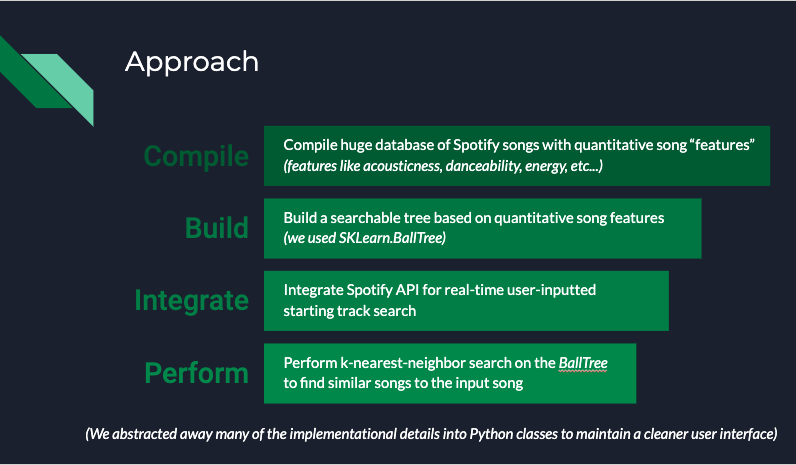Recommend Me Something New: Spotify Data
Being dissatisfied with Spotify’s current recommendation engine, a group of UC Berkeley students have created new ways to help users understand their music taste and recommend better music. Users can visualize their musical data in a more interactive way, and can now listen to more than just the repetitive song recommendations that Spotify is currently providing.
The students first created an interactive interface so users can better understand the insights that their own musical data offer. Users can also generate new playlists based on quantitative features of their ‘liked’ songs, instead of only using repetitive and high-level collaborative filtering song recommendations.
They created a program that can access playlists and song feature data for any user through Spotify’s APIs, which are used for both taste exploration and playlist recommendations. In the first tool, users can choose to see the distribution of their music genres or the trend of other musical features (such as danceability, acoustics, etc.) across time simply by clicking on some dropdown menus. The team also provides an interface to recommend new songs where users can select filters and parameters based on their preferences. These recommendations are strengthened after using the taste exploration tool. According to the team, the recommendation engine uses unsupervised machine learning algorithms including K-Nearest-Neighbors and decision trees.

In the future, the team plans to further improve the user experience by redesigning their interface and strengthening their recommendation model performance based on more user testing and feedback. Expect more to come!
Project by: Ellek Linton, Daron Assadourian, Holly Cheek, Tianchu Hang, Alessandro Buy, Alan Zhang